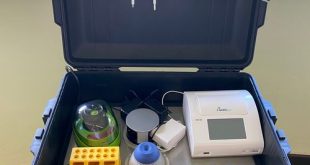Biomarkers like genes, proteins, hormones and lipids are found in extremely low concentration in the blood, cerebrospinal fluid, urine and various types of tissues, making them difficult to detect. In scientific discovery, many detection procedures use molecular probes, such as antibodies or short nucleic-acid sequences, which are designed to bind to specific biomarkers, but give off weak fluorescence signals. Now, scientists at Ludwig-Maximilians-Universität in Munich have developed molecular antennas that amplify these signals by coupling DNA probes to particles of gold or silver for greater precision and brightness. Interactions between the nanoparticles and incoming light waves intensify the local electromagnetic fields, leading to dramatically brighter fluorescence and easier detection of viruses or bacteria with antibiotic-resistance genes.
Check Also
New facial recognition software can now identify individual bears
A research project led by University of Victoria geography postdoctoral fellow Melanie Clapham identifies individual brown bears from photographs.
 BioLab Business Magazine Together, we reach farther into the Canadian Science community
BioLab Business Magazine Together, we reach farther into the Canadian Science community





